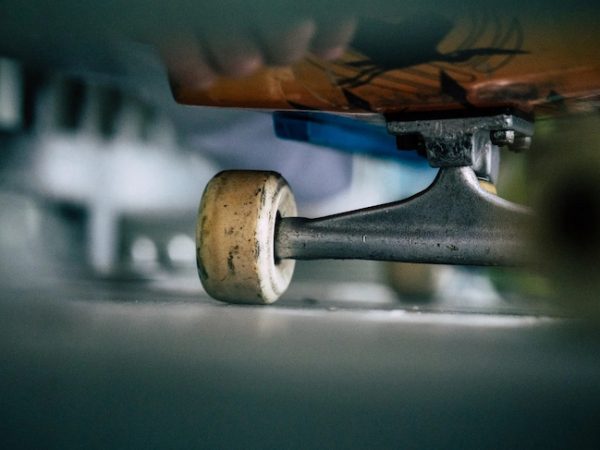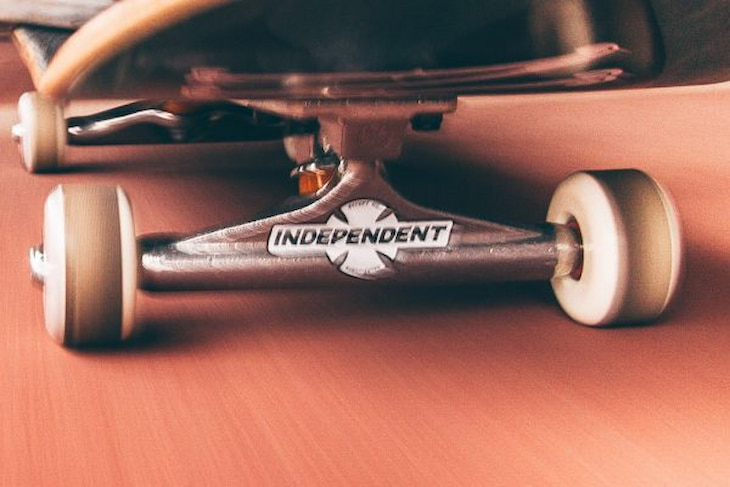02
Sep

For skateboarding enthusiasts, nothing beats the thrill of performing tricks and cruising around on a board that is customised to their liking. Its adrenaline-inducing, addictive nature is what makes it such a popular activity among people of all ages.
However, when it comes to choosing and assembling the right skateboard, many beginners are left confused by the various parts and components that make up this particular piece of equipment. It functions as a single unit but is made up of multiple parts with unique functions that contribute to the overall performance.
While there are different types of skateboards, the basic anatomy remains similar. All of them have a few key components that are essential for proper functioning and safe riding.
Kicking things off is a well-designed and sturdy skateboard bearing set that’s responsible for keeping your wheels spinning smoothly. You can find these small, metal balls inside the wheels and they reduce the friction between the wheel and the truck axle, allowing for a smooth ride.
They work by allowing the wheel to rotate independently from the axle and truck, giving you better control over your skateboard. This contributes to the overall speed and performance of your ride, making them an integral part of any skateboard.
In terms of materials, you can find skateboard bearing sets made from steel, ceramic or titanium. Each has its own unique features and benefits, so it’s important to do some research and choose the right one for your needs.
For starters, steel models are the most common and affordable option, suitable for casual riders thanks to their durability and smooth performance. Ceramic options, on the other hand, are known for their lightweight and high-speed capabilities, making them a popular choice among professional skateboarders.
Lastly, titanium varieties offer both lightness and strength but come with a higher price tag. They are ideal for serious skateboarders looking for a high-performance option.
Moreover, the ABEC rating for skateboard bearings determines their tolerance, precision, and overall speed capabilities. The higher the ABEC rating, the more precise and efficient the bearings will be.
However, it’s important to note that a higher rating does not always equate to better performance. For example, an ABEC 9 bearing may not necessarily outperform an ABEC 5 bearing if the quality and materials used are not up to par.
Aside from choosing the right material and ABEC rating, proper maintenance is also crucial for the longevity and performance of your skateboard bearings. Regular cleaning and lubrication will help keep them free of dirt and debris, ensuring a smooth ride every time.

Moving on to the trucks, these are the metal components that attach the wheels to the deck of a skateboard. They come in various sizes and shapes, with each type catering to different riding styles.
For instance, standard kingpin (SKP) models are the most common and versatile option, suitable for all levels of skaters and skateboarding disciplines. Reverse kingpin (RKP) options are larger and more stable, making them a popular choice for downhill and freeride skateboarding.
Additionally, their width and height also play a crucial role in the stability and turning capabilities of a skateboard. Wider trucks tend to be more stable, while narrower ones offer better maneuverability. Meanwhile, lower trucks provide more stability for higher speeds, while higher ones allow for sharper turns.
Next up, we have the wheels. These are arguably one of the most important components of a skateboard as they determine its speed, grip, and overall feel while riding.
When choosing the right ones, there are several factors to consider such as size, durometer (hardness), and shape. Generally, smaller wheels offer better acceleration and maneuverability, while larger ones provide more speed and stability.
The durometer rating is also crucial as it affects the wheel’s grip on different surfaces. Softer wheels with lower ratings (around 78-87a) are ideal for cruising and street skating as they provide better grip on rougher surfaces. Harder wheels with higher ratings (around 99-101a) are better for park and vert skating as they offer more speed and less grip, allowing for smoother slides.
Moreover, their shape also plays a role in their overall performance. Rounded versions provide better grip and control when carving and cruising. On the other hand, square-shaped models offer more stability for tricks and slides.
As the central component, the deck plays a vital role in the overall performance and feel of a skateboard. It is typically made of seven layers of wood, with each layer providing strength and flexibility to support the skater’s weight and movements.
The size and shape of the deck also greatly impact its functionality. Wider decks (around 8-9 inches) are better for stability and are suitable for larger feet, while narrower ones (around 7-8 inches) offer more maneuverability. Additionally, different shapes such as longboards or cruisers cater to specific riding styles.
In recent years, there has been an increase in the popularity of alternative materials such as carbon fibre or bamboo decks due to their lightweight yet durable properties. However, traditional wooden decks remain the go-to choice for most skateboarders.